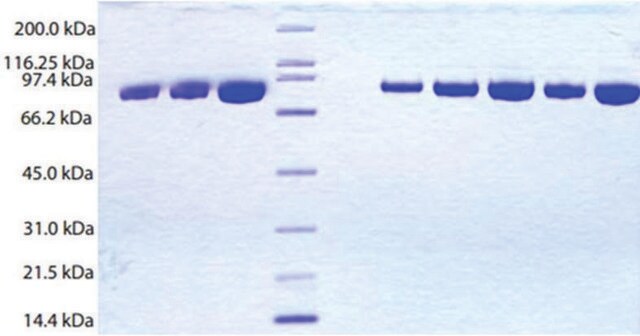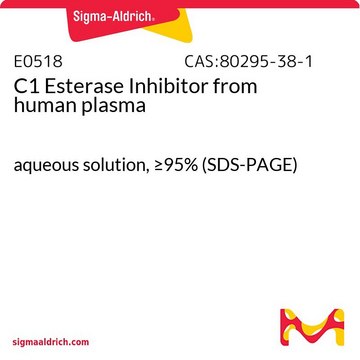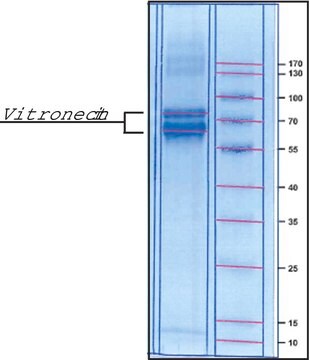SRP3318
C1 Inhibitor Peptide
≥95% (HPLC), lyophilized powder, human recombinant, expressed in CHO cells
Synonim(y):
C1inh, Plasma protease C1 inhibitor, Serpin G1
About This Item
Polecane produkty
product name
C1 Inhibitor human, recombinant, expressed in CHO cells, ≥95% (SDS-PAGE), ≥95% (HPLC)
pochodzenie biologiczne
human
rekombinowane
expressed in CHO cells
Próba
≥95% (HPLC)
≥95% (SDS-PAGE)
Postać
lyophilized
siła działania
≤2.6 nM IC50
masa cząsteczkowa
52.8 kDa
opakowanie
pkg of 200 μg
zanieczyszczenia
endotoxin, tested
numer dostępu UniProt
Warunki transportu
wet ice
temp. przechowywania
−20°C
informacje o genach
human ... SERPING1(710)
Opis ogólny
Działania biochem./fizjol.
Postać fizyczna
Rekonstytucja
Kod klasy składowania
11 - Combustible Solids
Klasa zagrożenia wodnego (WGK)
WGK 3
Temperatura zapłonu (°F)
Not applicable
Temperatura zapłonu (°C)
Not applicable
Certyfikaty analizy (CoA)
Poszukaj Certyfikaty analizy (CoA), wpisując numer partii/serii produktów. Numery serii i partii można znaleźć na etykiecie produktu po słowach „seria” lub „partia”.
Masz już ten produkt?
Dokumenty związane z niedawno zakupionymi produktami zostały zamieszczone w Bibliotece dokumentów.
Nasz zespół naukowców ma doświadczenie we wszystkich obszarach badań, w tym w naukach przyrodniczych, materiałoznawstwie, syntezie chemicznej, chromatografii, analityce i wielu innych dziedzinach.
Skontaktuj się z zespołem ds. pomocy technicznej







